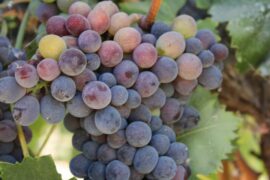Argentina is widely recognized as a red wine powerhouse, but its white wines are emerging with a fresh, distinctive character that’s turning heads. While red grape varieties still dominate the Argentine landscape, with only 12% of the country’s vineyards dedicated to white grapes according to the National Viticulture Institute (INV), there’s growing excitement among winemakers about the potential of Argentina’s white wines to redefine the nation’s wine identity.
Although the overall trend in Argentina has seen a decrease in white grape plantings and a drop in white wine exports since 2012, the situation is more nuanced. The INV’s latest report indicates that 2012 marked a peak in white wine exports, largely due to a significant shipment of Moscatel de Alejandria to the U.S., a one-time occurrence. However, since 2018, white wine exports have been steadily climbing again, rising from less than 278,000 hectoliters in 2018 to over 404,000 hectoliters in 2021. Despite Argentina’s economic challenges in recent years, several key trends in white wine production are helping to solidify the country’s reputation as a producer of noteworthy white wines.
Chardonnay Leading the Way
Chardonnay has been the standout success among Argentine whites. Between 2012 and 2021, Chardonnay exports grew by 24%, making it the third most exported grape variety, following Malbec and Cabernet Sauvignon, according to the INV in 2022. The excitement around Argentine Chardonnay stems from the significant improvements in quality, with winemakers focusing on the unique regional expressions of this versatile grape. The Uco Valley, particularly the subregions of Gualtallary, Paraje Altamira, and San Pablo, has become a hub for premium Chardonnay, though outstanding examples are also emerging from Chubut and Río Negro.
Ernesto Bajda, winemaker at Catena Zapata, emphasizes the potential of Argentine Chardonnay. He notes that the diversity of soils in the Uco Valley, combined with its cool climate, results in wines with exceptional natural acidity and distinct citrus and floral notes. Catena Zapata’s White Bones and White Stones, both from the same vineyard in Gualtallary, exemplify how different soil types can produce radically different wines even when made from the same grape and with identical vinification techniques.
Torrontés: A Native Grape Coming of Age
As international markets become more familiar with Argentina’s native Torrontés grape, this aromatic variety has seen steady growth in sales and reputation. Between 2012 and 2021, Torrontés exports increased by 5.6%, making it the second most exported white grape after Chardonnay. Susana Balbo, a pioneer in Torrontés winemaking, has played a crucial role in transforming this grape from producing simple wines to creating fresh, aromatic, and lively expressions.
Balbo’s innovations continue as she experiments with aging Torrontés in French oak, using a unique method of barrel toasting that enhances the wine’s complexity without imparting overt oak flavors. Her work, along with that of other producers like El Enemigo, Colomé, and Piatelli, is helping Torrontés gain critical acclaim and expand its presence on the global stage.
Reviving Old Vines and Exploring New Varieties
Argentina is also experiencing a renaissance of old vines, particularly with Semillon. Notable producers like Mendel, Michelini i Mufatto, and Matías Riccitelli Wines are leading the charge with high-quality Semillon wines. Meanwhile, there is a renewed interest in old-vine Riesling from Río Negro and new plantings in the Uco Valley, where this variety shows great aging potential and complex aromatics.
Explorations into lesser-known white varieties are adding to the excitement. Winemakers are experimenting with Albariño, Verdejo, Fiano, and Roussanne, among others. Norton, for instance, is exploring Grüner Veltliner, a versatile grape with potential for both sparkling and still wines. Domaine Bousquet is backing Sauvignon Blanc, producing a “super-premium” white wine that exemplifies Argentina’s potential in this category.
Innovative White Blends on the Rise
Argentina’s winemakers are also making strides with white blends, combining traditional and new grape varieties in creative ways. From Torrontés blends in Salta to Rhône-style blends in Los Chacayes, these innovative wines are adding to the diversity and appeal of Argentine whites. The Uco Valley, in particular, has become a focal point for this trend, with blends that often include Semillon, Sauvignon Blanc, and Chardonnay.
With a growing array of exciting white wines from across the country, Argentina is showcasing the creativity and innovation of its winemakers, making this summer all about discovering the fresh and distinctive whites from this dynamic wine-producing nation.





















































